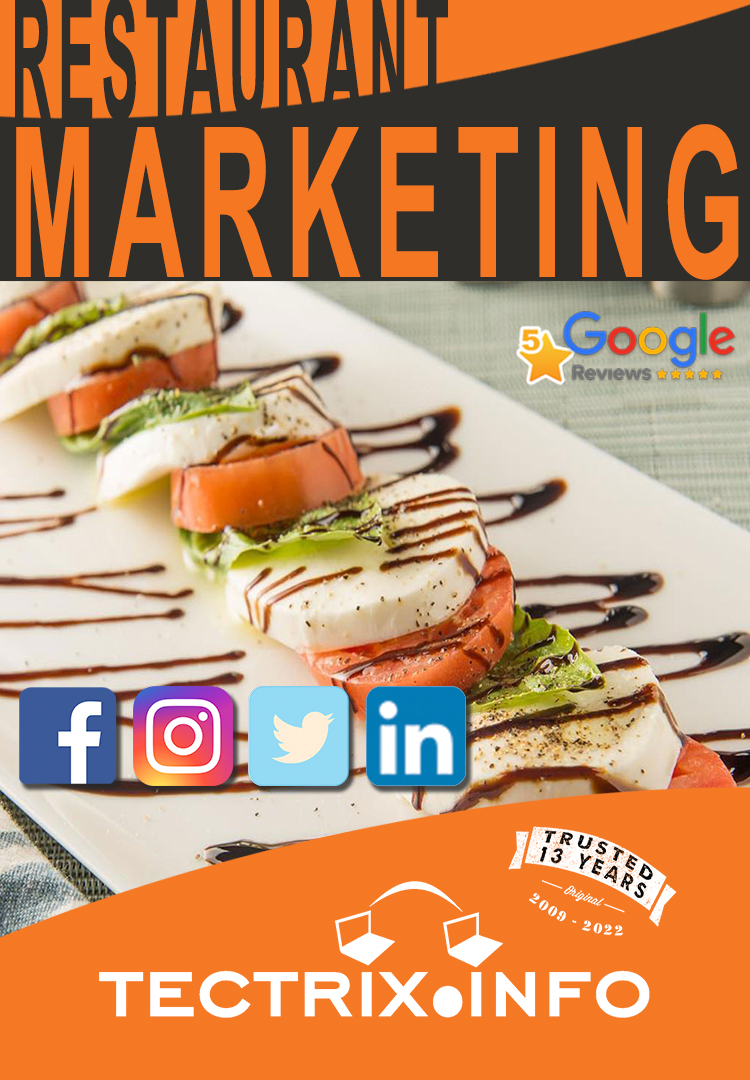How to Do Restaurant Marketing.
You already know that your customers are the bedrock of your business. Everyone who visits — from regulars who know every staff member’s name to out-of-towners who stop in for the wifi and end up thrilled with your food and hospitality — is what pushes your business forward.
That’s why restaurant marketing is so crucial: it helps you find new customers, expand your community, and make regulars out of your drop-in guests. And the COVID-19 pandemic has made this even more important. Guest expectations have changed, making it more difficult to compete with restaurants that have successfully pivoted and adapted operations to increase safety, contactless experiences, and digital ordering.
Creating strong customer relationships and providing an extraordinary dining experience will set you apart from the competition, and the best place to start is by developing your restaurant marketing strategies. Effective marketing, through digital channels, email campaigns, advertising, and more make all the difference in bringing guests back again and again.
Let’s start with the basics.
What is restaurant marketing?
Marketing a restaurant is the act of showcasing your restaurant or food service concept and offering your services to the general public to win their business. It’s a large part of what builds up a restaurant brand.
Broken down, marketing is the strategy behind how you engage with your customer base. There is no single way to do this, but instead a sequence of actions taken across multiple channels to holistically reach your audience.
Why should I market my restaurant?
There’s not a lot of elbow room in the restaurant industry in the U.S. Restaurant marketing has gone from nice-to-have to necessary as business owners from coast to coast try to stand out from the field.
Though best thought of as a tool to drive your business forward, marketing your restaurant is all about connecting with your customers wherever they are and fostering solid relationships. As a restaurant owner, you know full well the transformative power of hospitality; restaurant marketing allows you to show genuine hospitality to your guests when they’re not within the four walls of your restaurant.
The most obvious benefit of restaurant marketing is that it grows revenue by increasing both foot and online traffic to your business. Other benefits of restaurant marketing include:
It supports your customer retention and increases customer lifetime value.
It attracts new staff members.
It gets the word out about your restaurant’s mission, vision, and purpose.
It increases brand awareness.
It introduces you to new audiences and markets.
It helps you build connections within your local restaurant community.
It opens you to new business partnerships and collaborations.
It creates new opportunities with distributors and vendors.
How much should I spend on restaurant marketing?
As with many of the facets involved in restaurant operations, there’s no one-size-fits-all approach to restaurant marketing, nor is there a magic number regarding how much you should spend on restaurant marketing.
Some marketing, like social media, can be completely free. Restaurant digital marketing and social media marketing are divided into organic (or free) posting and paid-to-post. Organic posting doesn’t cost anything – you can post photos, videos, and messages on your social sites without putting any money behind it. However, allocating a small budget towards boosting and promoting your posts can be hugely impactful on your audience reach.
To decide if paid posting is right for your restaurant, you’ll want to consider your audience size and reach, the frequency of posting and promotion, and the quality of your content.
For most restaurants, the range for spending on marketing typically spans anywhere from 3–10% of sales. On the subject of establishing a marketing budget for your business, here’s what The U.S Small Business Administration recommends:
“Many businesses allocate a percentage of actual or projected gross revenues – usually between 2-3% for run-rate marketing and up to 3-5% for start-up marketing. But the allocation actually depends on several factors: the industry you’re in, the size of your business, and its growth stage. For example, during the early brand-building years, retail businesses spend much more than other businesses on marketing — up to 20% of sales. As a general rule, small businesses with revenues less than $5 million should allocate 7-8% of their revenues to marketing. This budget should be split between 1) brand development costs (which includes all the channels you use to promote your brand, such as your website, sales collateral, etc.), and 2) the costs of promoting your business (campaigns, advertising, events, etc.). This percentage also assumes you have margins in the range of 10-12% (after you’ve covered your other expenses, including marketing).”
Low-budget restaurant marketing ideas
Getting started with marketing doesn’t have to be expensive. There are many ways to get started with a very low budget but still yield strong results. Here are a few ideas to get you started:
Organic social media: Instagram, Facebook, Twitter, and TikTok are all free to set up accounts and start posting. While paid social advertising can definitely help grow your accounts faster, organic social growth is just as important to communicate with guests and build relationships.
Website and search optimization: Updating your Google My Business profile, including specific keywords on your website, and prominently displaying your hours, location, menu, and online ordering platform on your website and google profile are all easy and free ways to up your online presence.
Email marketing: While not completely free, email marketing is an inexpensive and incredibly impactful way to reach and engage with your audience. Learn more about email marketing here.
When you’re ready to up your marketing game and spend a little more, here’s how to calculate what, and where, to spend.
How do I calculate the right restaurant marketing budget for my business?
Before we get started calculating the proper restaurant marketing budget for your specific concept, you’ll need to pull the following metrics:
Annual revenue
Revenue by month
Your restaurant’s profit margin. To calculate your restaurant’s profit margin, simply subtract your annual operating costs from gross revenue. Per the above advice, if your restaurant is not operating with a 10–12% profit margin, consider spending time evaluating your menu, inventory purchasing decisions, and how you’re maximizing product usage to decrease sitting inventory.
And compile the following stats about your business:
Your restaurant’s age
Your restaurant’s market share. To calculate your restaurant’s market share, divide your restaurant’s sales by your local restaurant market’s sales within a given fiscal period. Reach out to your state’s restaurant association for granular market insights about sales, demographics represented, churn, and more.
Your restaurant’s average customer acquisition cost.
Now that you’ve settled on how much budget you can allocate to cover your restaurant marketing initiatives, it’s time to develop a well-rounded restaurant marketing strategy to help you accomplish your restaurant marketing goals.
Original Article>
https://pos.toasttab.com/blog/on-the-line/restaurant-marketing


